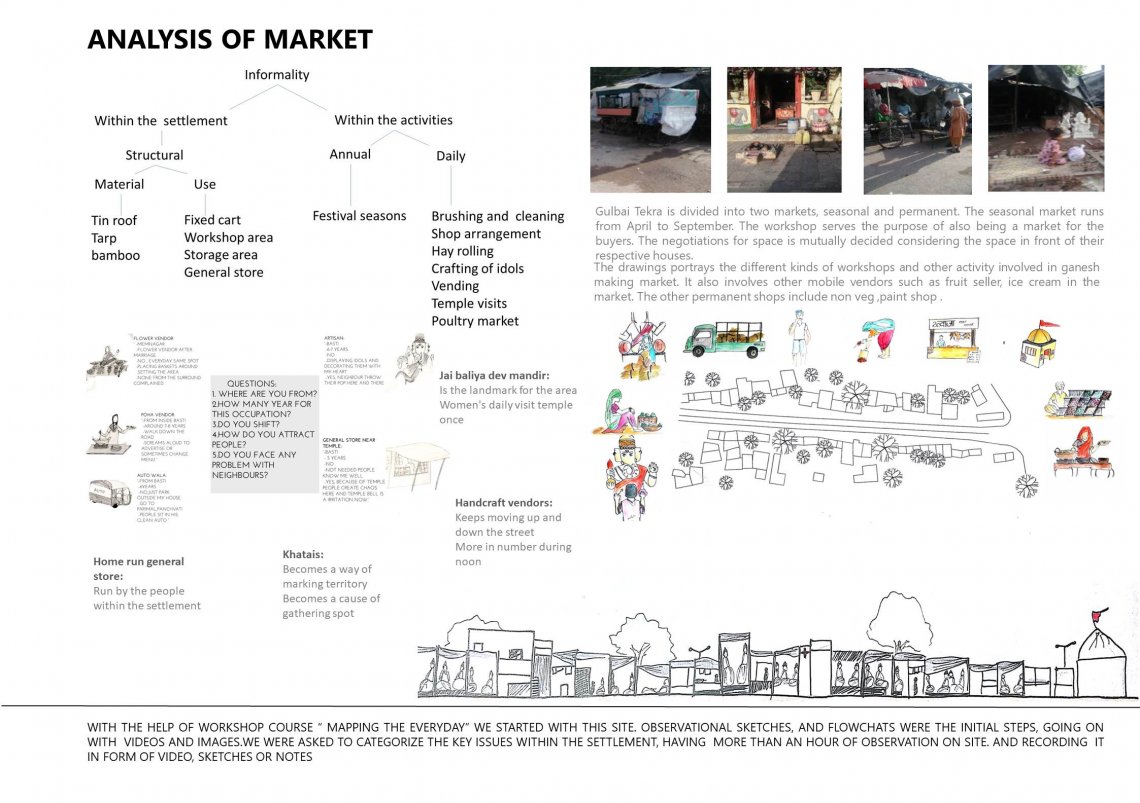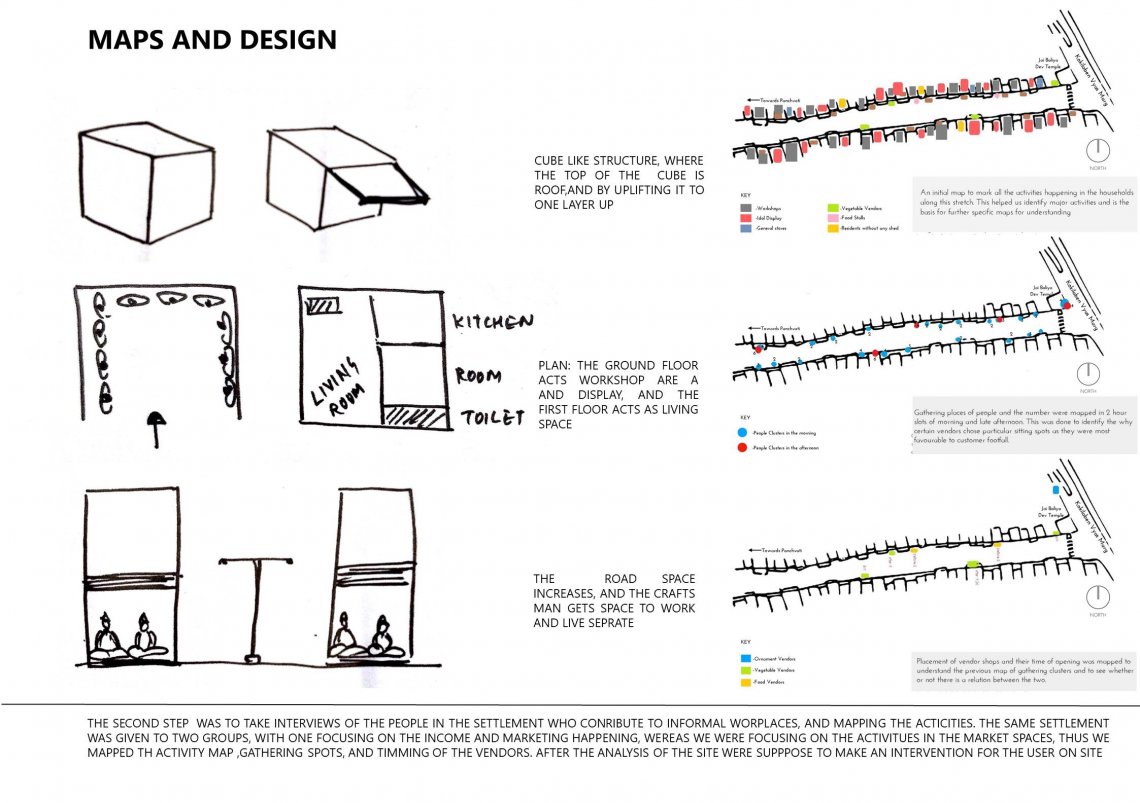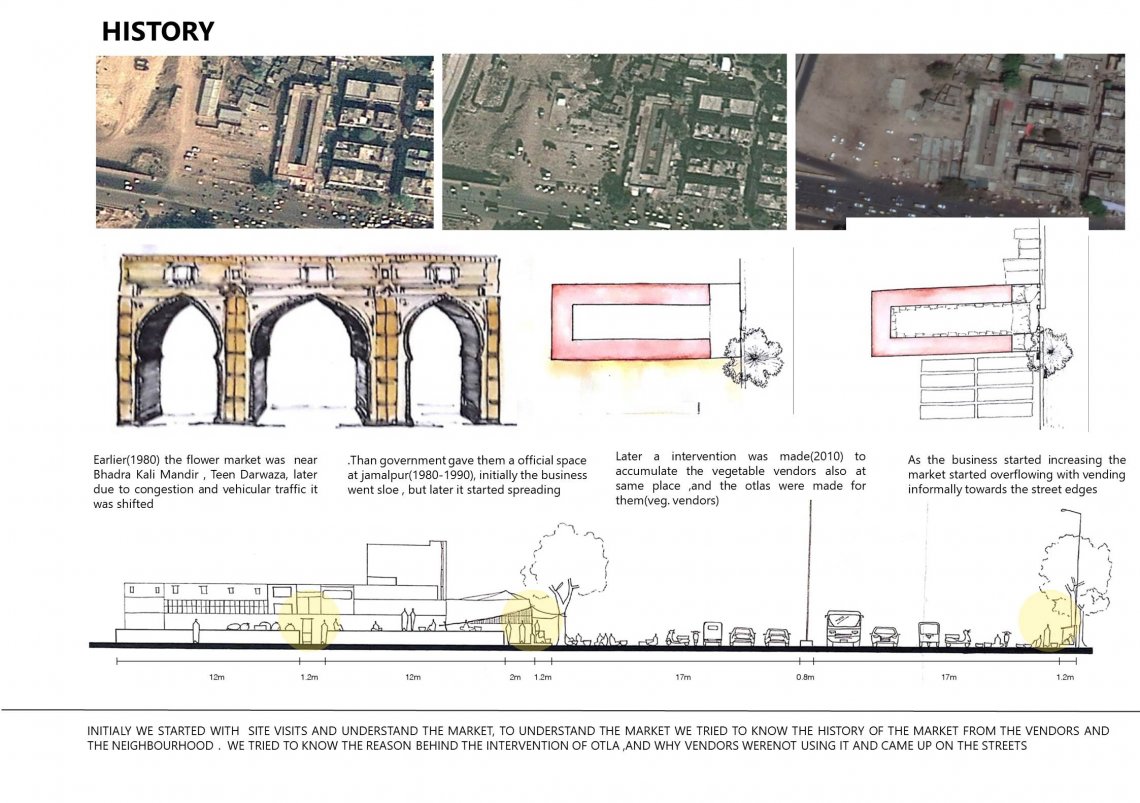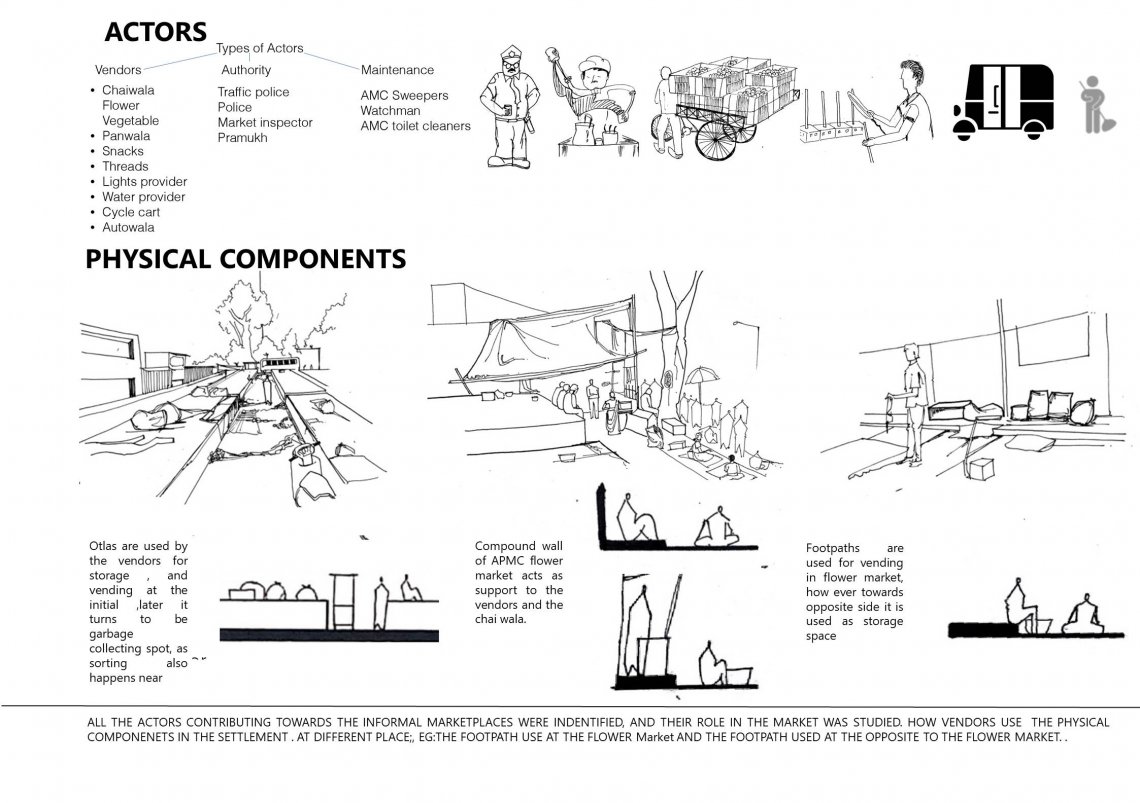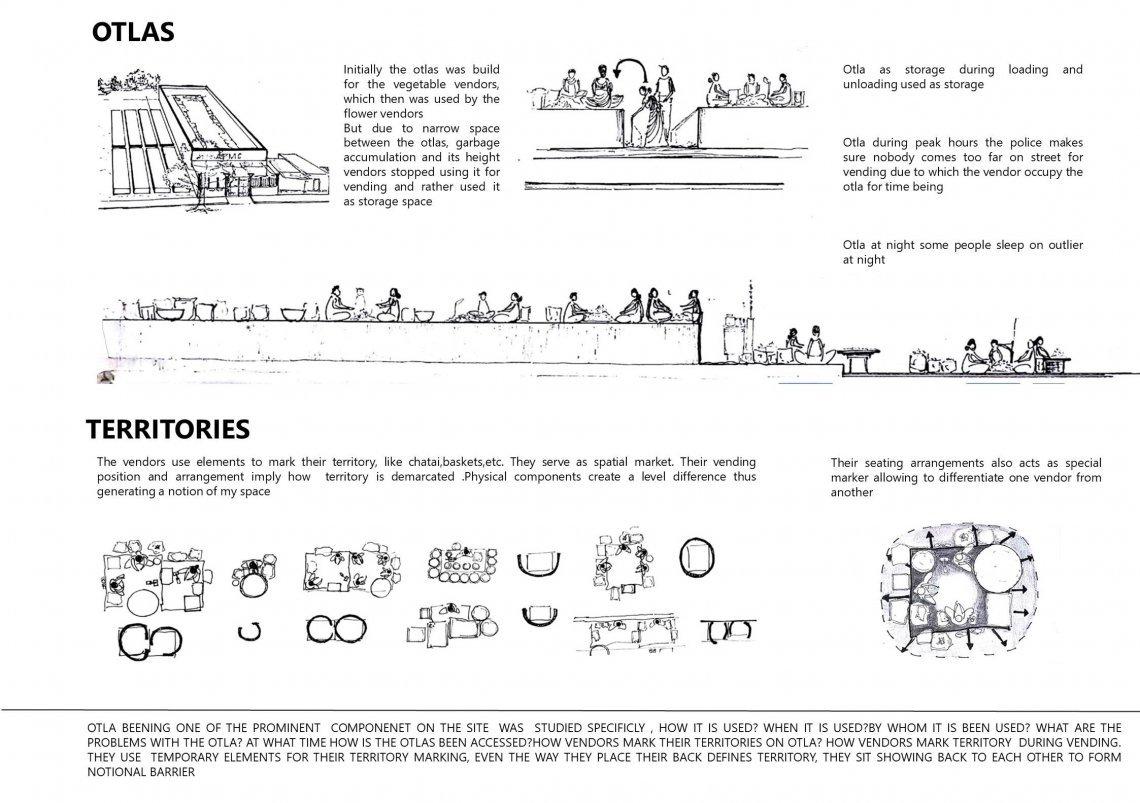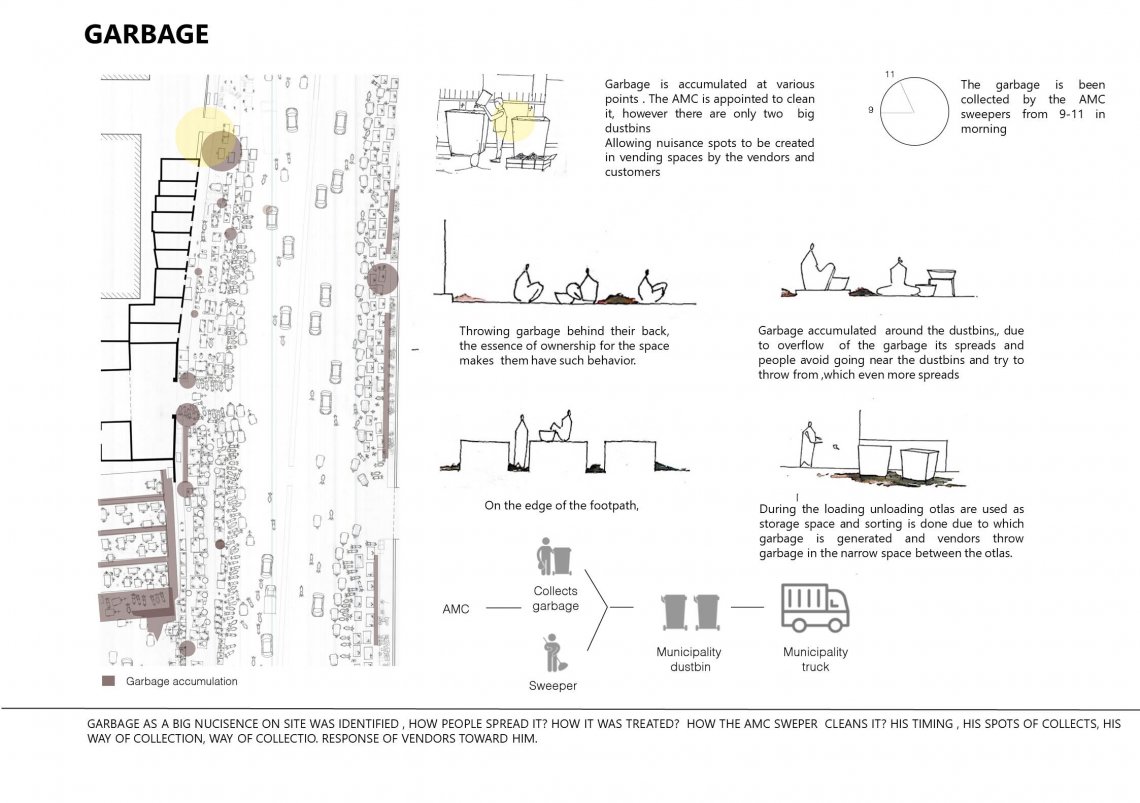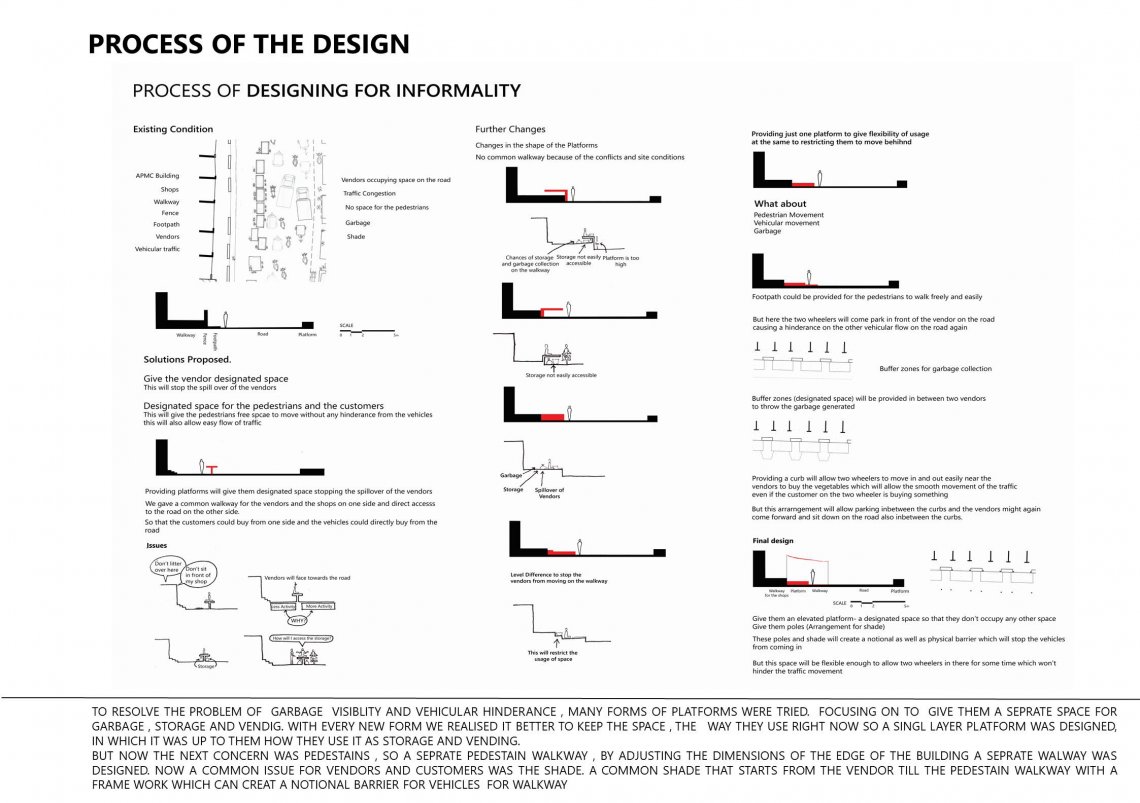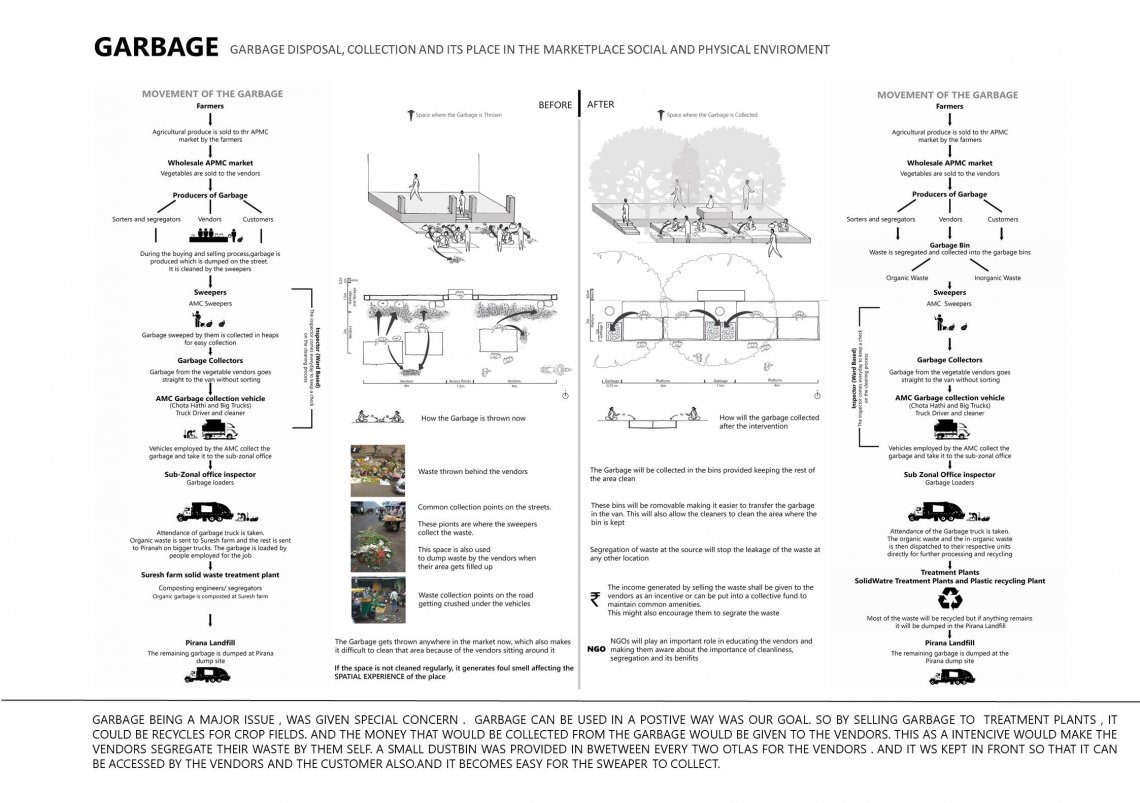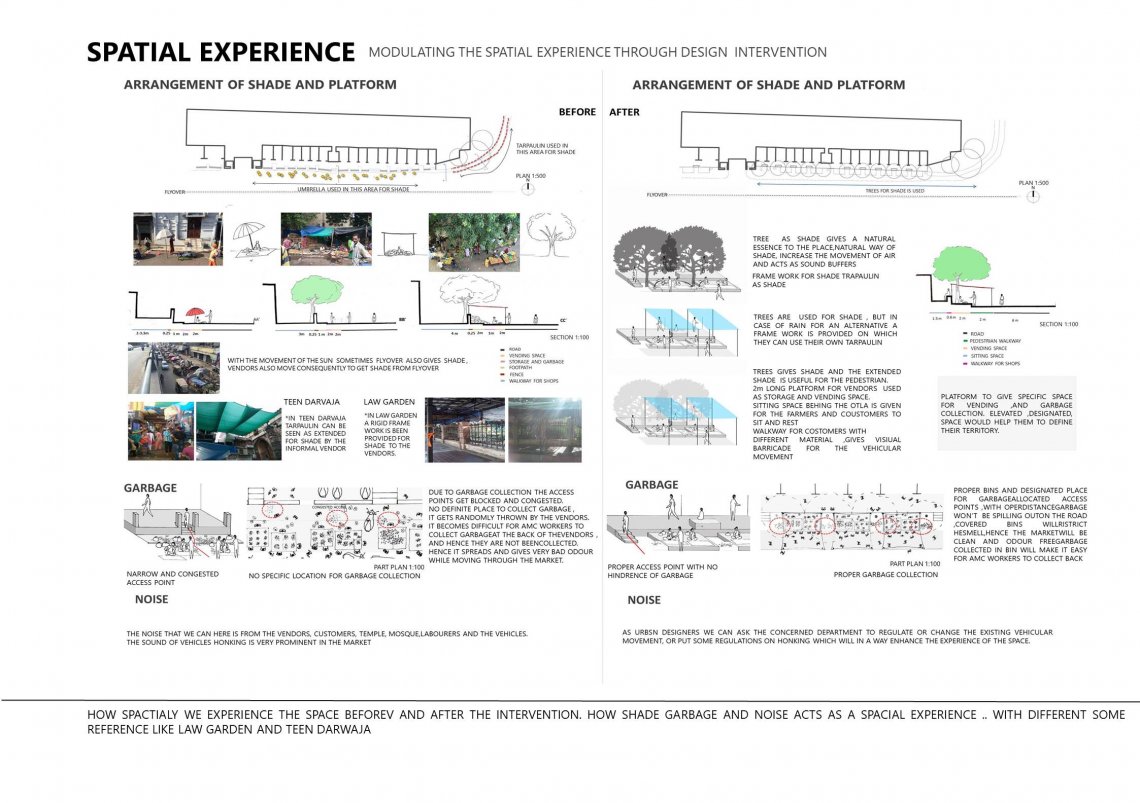Your browser is out-of-date!
For a richer surfing experience on our website, please update your browser. Update my browser now!
For a richer surfing experience on our website, please update your browser. Update my browser now!
In moving towards the goal of responding to informality, the studio has assumed the spatial ethnographic approach of ‘Mapping the everyday’ as a starting point of the studio. The attempt has been to made to learn, how to read the everyday and how to represent the everyday in maps and sketches. In the first phase which was a 4-week exercise, I have looked at ‘Exploratory sites 'in a group of two that included: The making/selling of Ganesha idols at Hollywood basti, Gulbai Tekra It was at the start of this exercise where we went to site made our observation through flow chats and sketches and tried to understand their everyday in marketplace. In the second phase, the studio looked at the informal urban space settings outside and along the Jamalpur APMC market. In this 12-week exercise, the students have focused on: Understanding the informal and the everyday in the marketplace (ANALYSIS) in the context of Jamalpur. Developing Urban design strategies and guidelines in response to informality (DESIGN) In the ANALYSIS component, an in-depth analysis of the informal vending activities was carried out using the concept of territoriality where we in a group of 4 looked at how territories were negotiated both spatially and socially and what measures were adopted to resolve conflict between the different stakeholders. In the DESIGN component, the attempt has been to draw upon the concepts of temporality and resilience. This has led us to prepare urban design plans that show temporal usage of the space through the day. The temporal plans suggest that the space is designed so as to be used in multiple ways at different times and is therefore resilient in nature thereby reducing congestion as well as contestations in space. While the design strategies were specific to each zone within the site, each group also proposed urban design guidelines that were more generic in nature and could be applied to marketplaces elsewhere in the city as well. Towards this end, the studio has attempted a 3-pronged approach for developing design strategies: • Designing a system: Garbage disposal, collection and its place in the marketplace social and physical environment • Influencing the functionality of the urban space through physical and systemic changes • Modulating the spatial experience through a design intervention With the goal of making the informal urban space more livable and humane; improving the spatial experience and creating a supportive public infrastructure, the design strategies part includes the ‘design of a system’.
